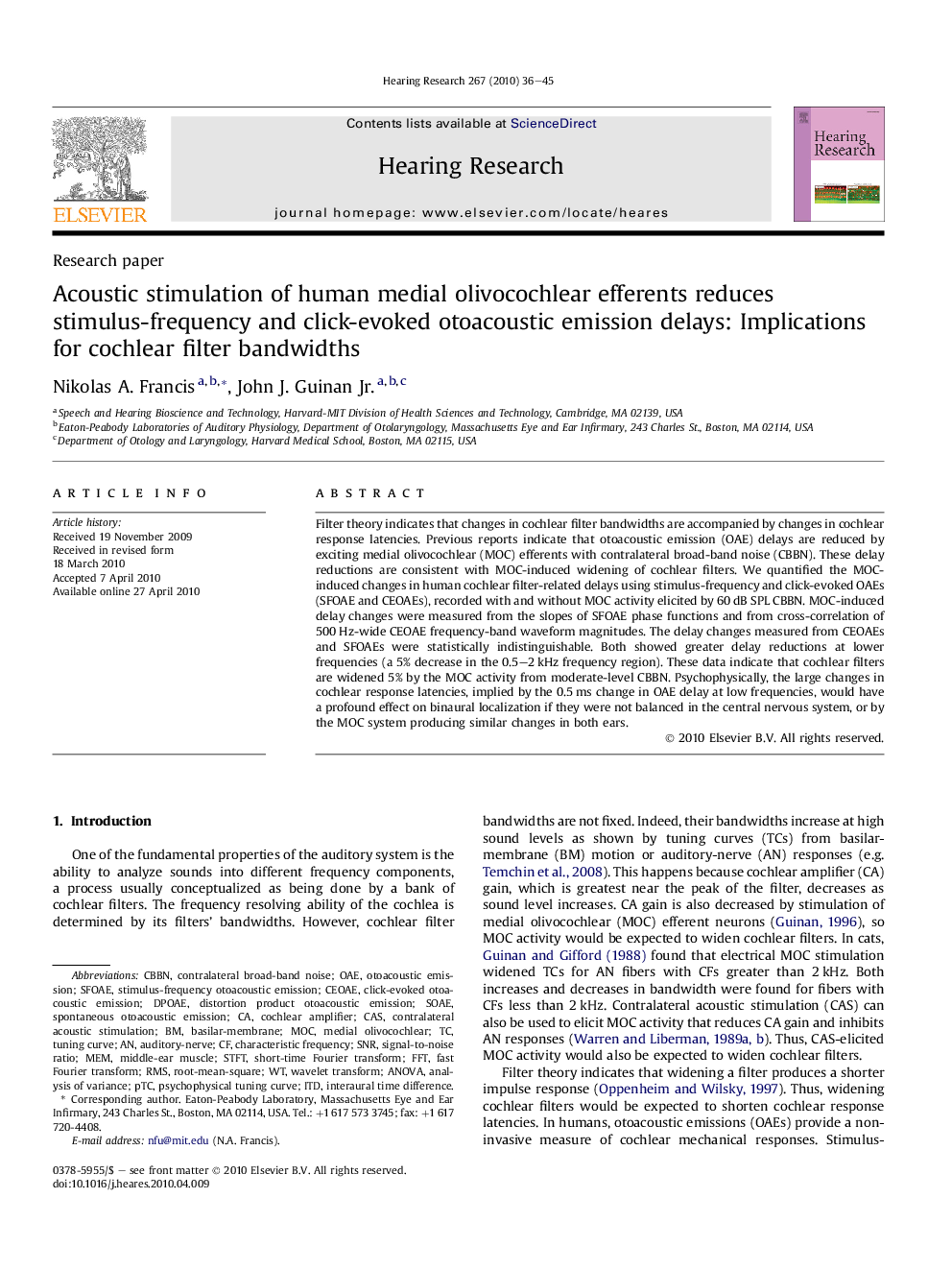| Article ID | Journal | Published Year | Pages | File Type |
|---|---|---|---|---|
| 6287727 | Hearing Research | 2010 | 10 Pages |
Abstract
Filter theory indicates that changes in cochlear filter bandwidths are accompanied by changes in cochlear response latencies. Previous reports indicate that otoacoustic emission (OAE) delays are reduced by exciting medial olivocochlear (MOC) efferents with contralateral broad-band noise (CBBN). These delay reductions are consistent with MOC-induced widening of cochlear filters. We quantified the MOC-induced changes in human cochlear filter-related delays using stimulus-frequency and click-evoked OAEs (SFOAE and CEOAEs), recorded with and without MOC activity elicited by 60Â dB SPL CBBN. MOC-induced delay changes were measured from the slopes of SFOAE phase functions and from cross-correlation of 500Â Hz-wide CEOAE frequency-band waveform magnitudes. The delay changes measured from CEOAEs and SFOAEs were statistically indistinguishable. Both showed greater delay reductions at lower frequencies (a 5% decrease in the 0.5-2Â kHz frequency region). These data indicate that cochlear filters are widened 5% by the MOC activity from moderate-level CBBN. Psychophysically, the large changes in cochlear response latencies, implied by the 0.5Â ms change in OAE delay at low frequencies, would have a profound effect on binaural localization if they were not balanced in the central nervous system, or by the MOC system producing similar changes in both ears.
Keywords
PTCCEOAEMiddle-ear muscleSOAEMOCSTFTITDDPOAESNRSFOAERMSFFTCASOAEmedial olivocochlearOtoacoustic emissionspontaneous otoacoustic emissionclick-evoked otoacoustic emissiondistortion product otoacoustic emissionFast Fourier transformWavelet transformShort-time Fourier transformContralateral acoustic stimulationanalysis of varianceANOVAInteraural time differenceCochlear amplifierroot-mean-squareCharacteristic FrequencyMEMTuning curvepsychophysical tuning curveSignal-to-noise ratio
Related Topics
Life Sciences
Neuroscience
Sensory Systems
Authors
Nikolas A. Francis, John J. Jr.,
